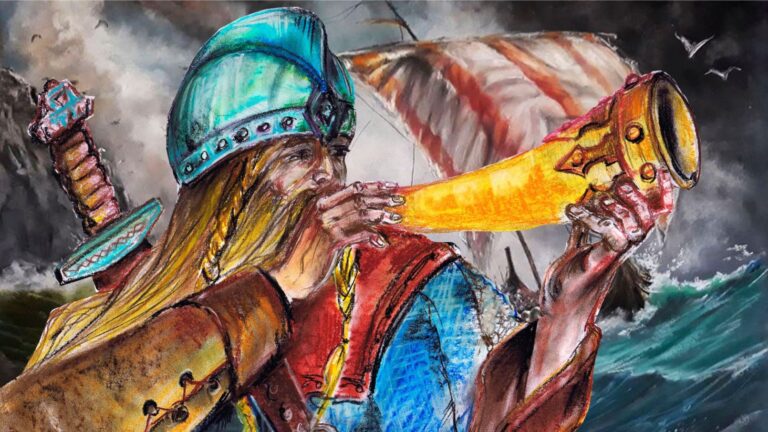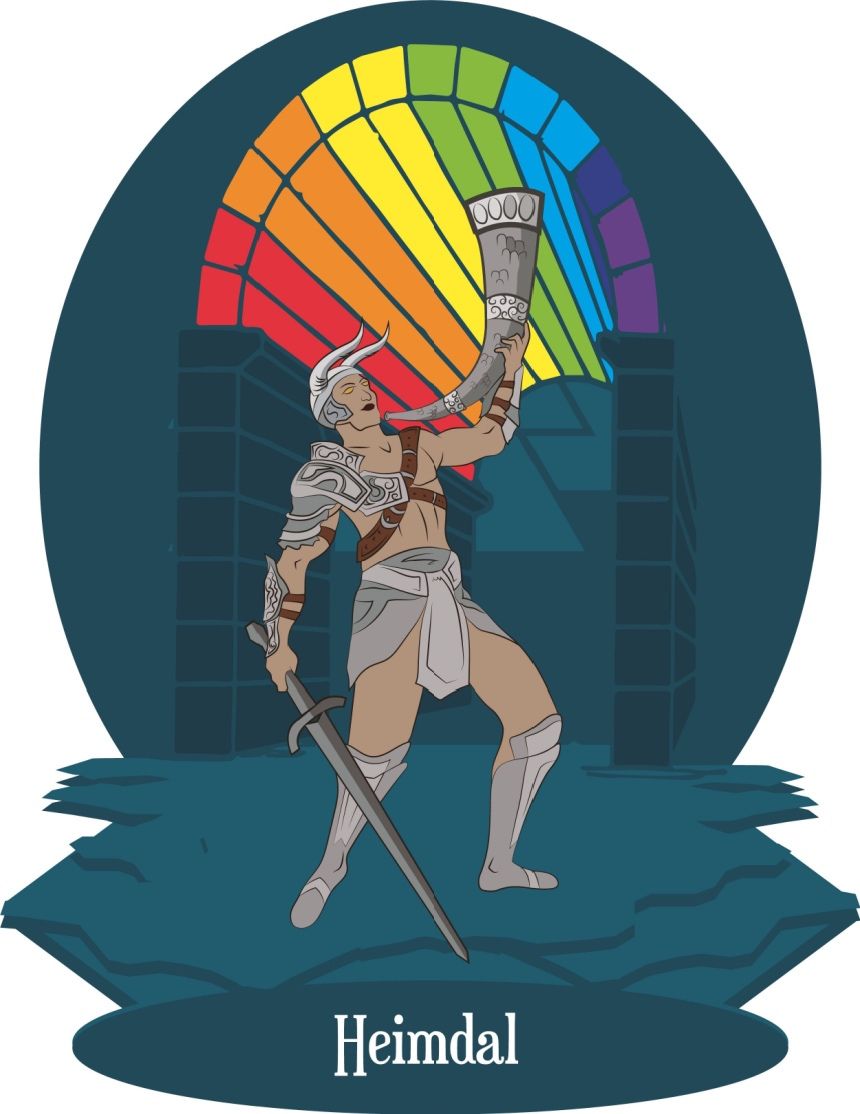Are you keen to learn more about Norse mythology? Test your knowledge or perhaps learn something new with these fun facts about Heimdall, the watchman of the Gods.
Heimdall, a character that has fascinated many through appearances in modern media, holds a deep and complex background rooted in Norse mythology.

Known primarily as the vigilant guardian of Asgard, Heimdall's lore is rich with tales of extraordinary senses, unparalleled duties, and a mysterious origin. Here are five captivating facts about one of the most intriguing Norse Gods.
1. Guardian of the Bifröst Bridge
Heimdall's role as the Guardian of the Bifröst Bridge is central to understanding his importance within the Norse pantheon and the mythological cosmos.
The Bifröst, described in the myths as a glowing rainbow bridge, serves as the only path between Midgard, the world of humanity, and Asgard, the realm of the gods.
This bridge, therefore, is not only a physical connector but also a symbol of the cosmic balance and harmony between the divine and the earthly.
Heimdall's residence, Himinbjörg, which translates to “Heaven Cliffs” or “Sky Mountain,” is perched at the highest point where the Bifröst meets Asgard.
From this vantage point, Heimdall is perfectly positioned to observe both the realms of gods and men, embodying his role as a protector and guardian.
Himinbjörg is not just a home but a fortress, signifying Heimdall's duty to guard the gods and the realms against any form of intrusion or aggression.
Bifröst's depiction as a rainbow signifies hope and connection, bridging the divine with the mortal.
However, the bridge is also said to be fragile and in constant danger of being destroyed by the forces of chaos, particularly during the events leading up to Ragnarok.

So, Heimdall's guardianship extends beyond mere surveillance to a broader role in maintaining cosmic stability and balance.
2. Possessor of Keen Senses
One of the most extraordinary aspects of Heimdall is his sensory perception, which is beyond the realm of human understanding.
His eyesight is so sharp that he can see for hundreds of miles, regardless of the time of day, and his hearing is so acute that he can detect the sound of grass growing on the ground and wool growing on sheep.
This heightened sensory awareness makes him the ideal sentinel for the gods, able to detect threats long before they reach Asgard's gates.
3. The Gjallarhorn: A Signal of Doom
The Gjallarhorn, with its haunting sound that echoes the onset of Ragnarok, is among the most emblematic symbols in Norse mythology, closely linked to Heimdall, the vigilant guardian of Asgard.
This ancient instrument's name, translating roughly to “yelling horn” or “the loud-sounding horn,” embodies its role as a harbinger of the apocalypse, a final warning of the end times for the gods and the cosmos.
The origins of the Gjallarhorn are shrouded in the mystique of Norse myth. Entrusted to Heimdall, it is more than just an instrument; it is a potent artifact endowed with the power to herald the beginning of the end, Ragnarok itself.
This crucial role underscores Heimdall’s importance, situating him at the very heart of the gods' last stand against their enemies.
4. A God of Many Mothers
Heimdall's extraordinary birth from nine mothers is a cornerstone of his mythology, marking him as a figure deeply interwoven with the Norse cosmos.
This unique origin is often interpreted as symbolising his connection to the natural and elemental forces, suggesting that each mother represents one of the nine worlds in Norse cosmology.
This imbues Heimdall with aspects from each realm, making him a guardian not only of Asgard's physical safety but also of the cosmic balance and order.
His remarkable abilities, such as his unparalleled sight and hearing, are thus seen as deriving from his profound connection to these elemental forces.
This connection extends to his role in Ragnarok, where his origins and abilities underscore his position as a key figure in the cyclical processes of destruction and renewal that define the Norse view of the cosmos.
Heimdall's guardianship goes beyond mere physical defence, symbolising the maintenance of the natural order and the balance between the cosmic forces.
5. Enigmatic Origins and Roles
Despite his prominence in Norse mythology, much about Heimdall remains a mystery. Ancient texts hint at his significant roles, including possibly being considered the father of mankind and establishing the hierarchical structure of Norse society.
Additionally, Heimdall's association with the ram and the enigmatic references to his “hljóð” beneath the world tree Yggdrasil suggest a deeper, symbolic significance that has puzzled scholars for centuries.
Heimdall's character embodies the intersection of the natural world's might, the deep mysteries of divine origin, and the stark realities of cosmic fate.
His story enriches the tapestry of Norse mythology, offering a glimpse into the ancient Norse's values, fears, and understanding of the world around them.

